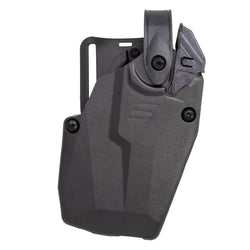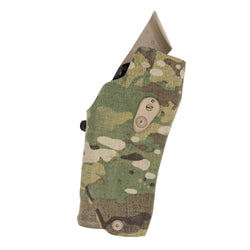While representing the U.S. in the Olympic sport of biathlon, I was blessed to compete worldwide for nearly 20 years. I learned many lessons then, and some stand out more than others.
I still remember one of my first World Cup experiences where I missed a shot I knew I should’ve made. It was during a biathlon race in Italy. The race was at altitude, the hills were steep, my heart was pounding in my ears, and my rifle felt heavier than usual. I skied into the range, the crowd cheering; I lined up my shot, press the trigger—and missed…BIG!!

That moment taught me something most shooters don’t learn until under pressure: accuracy fades fast when adrenaline takes over.
This is where my training and preparation became essential to my performance. In this situation, I wasn’t prepared to perform. I let the pressure of the moment get to me both physically and mentally. Thankfully, in my sport, I was given a second chance in a race the very next day. In real-life self-defense situations, you don’t have that luxury.
Why You Should Train Under Stress

You rarely get the luxury of calm breathing and a steady stance in sports and self-defense. And yet, too many shooters only train under perfect conditions. Life doesn’t come at you in slow motion.
An elevated heart rate and adrenaline increases your wiggle pattern, disrupts your breath, and narrows your vision. Unless you’re trained for it, it’s a recipe for a poor shot.
Strategies For Combatting Stress
To combat adrenaline and the elevated heart rate of physical or mental stress, I began incorporating cardio into my shooting drills. I would sprint 50 yards, drop to the prone position, and shoot. I’d do pushups, draw, and fire. At first, it wrecked my accuracy. But over time, it improved my accuracy quite significantly. This gave me the ability to combat the physical effects of stress, whether mental or from exertion.
From my training, I also learned breathing control. Your breath helps to quell stress, adrenaline, fatigue, etc. It’s a powerful tool for helping you relax better and shoot more accurately. Learning to control your breathing while under stress can help you shoot more accurately under pressure.
Incorporating physical stress (cardio) into shooting drills can help mimic how your body might respond under stress. This will help you understand how to react and adjust to stressors, helping you to perform under stress.
You’ll be amazed how quickly your performance improves when you push your limits.

Build Muscle Memory Through Reps
Consistency in training is key. By integrating some type of stress drills into every session your body learns to perform when it’s uncomfortable. Practice reloads when tired. Practice malfunction drills after sprinting.
Confidence comes from competence. And competence is forged under pressure. Don’t let adrenaline derail your aim. Train with purpose, train under pressure, and when your heart’s pounding, your fundamentals won’t flinch. Get out there and make your training count.









